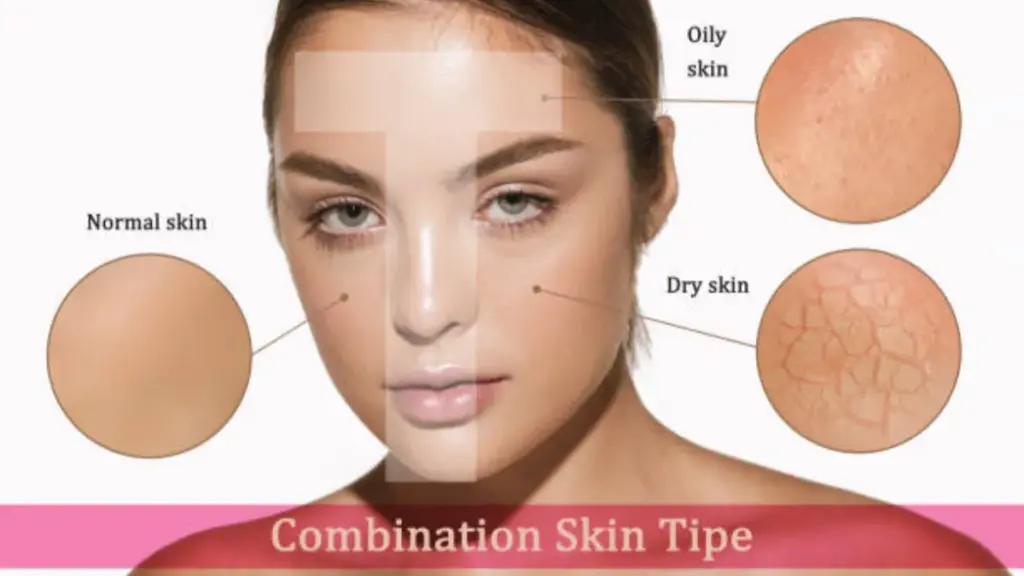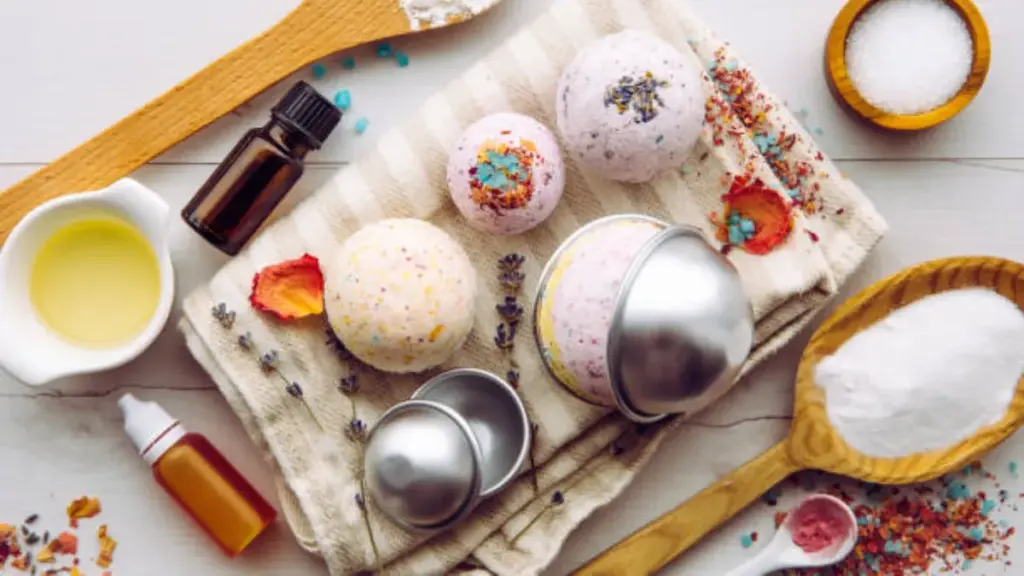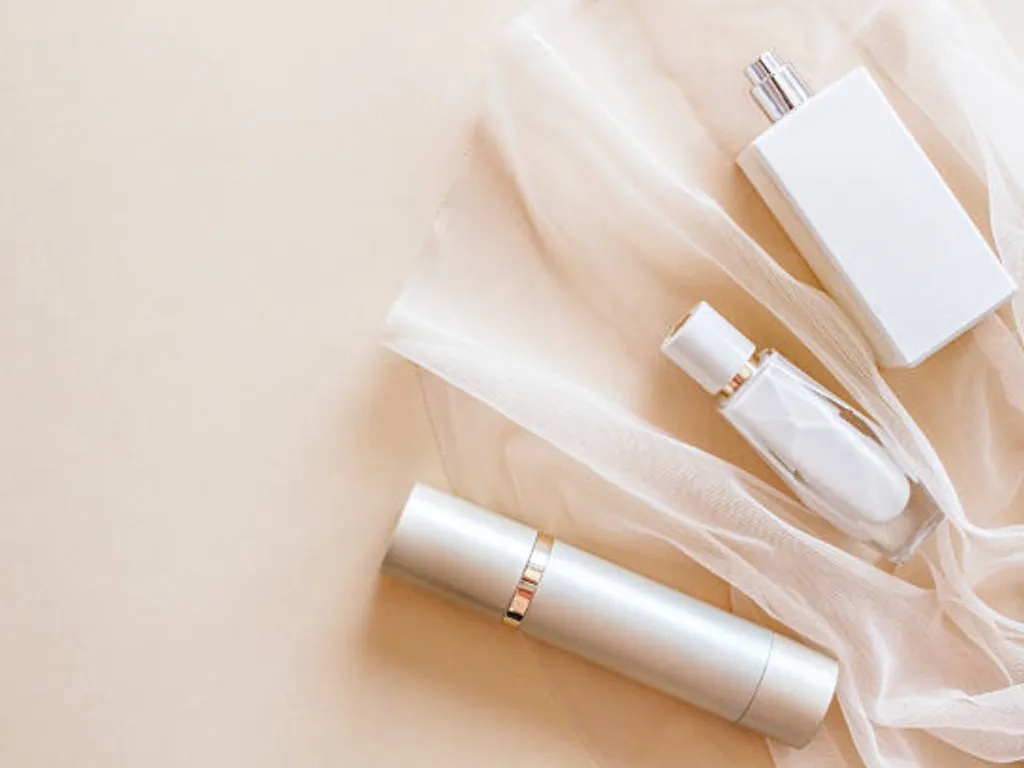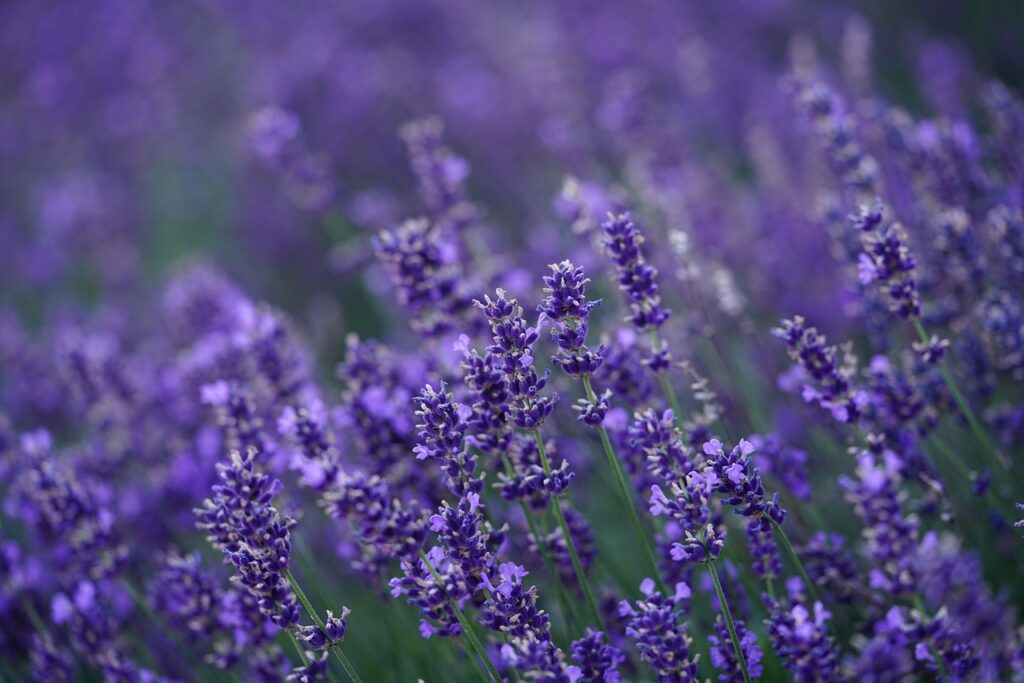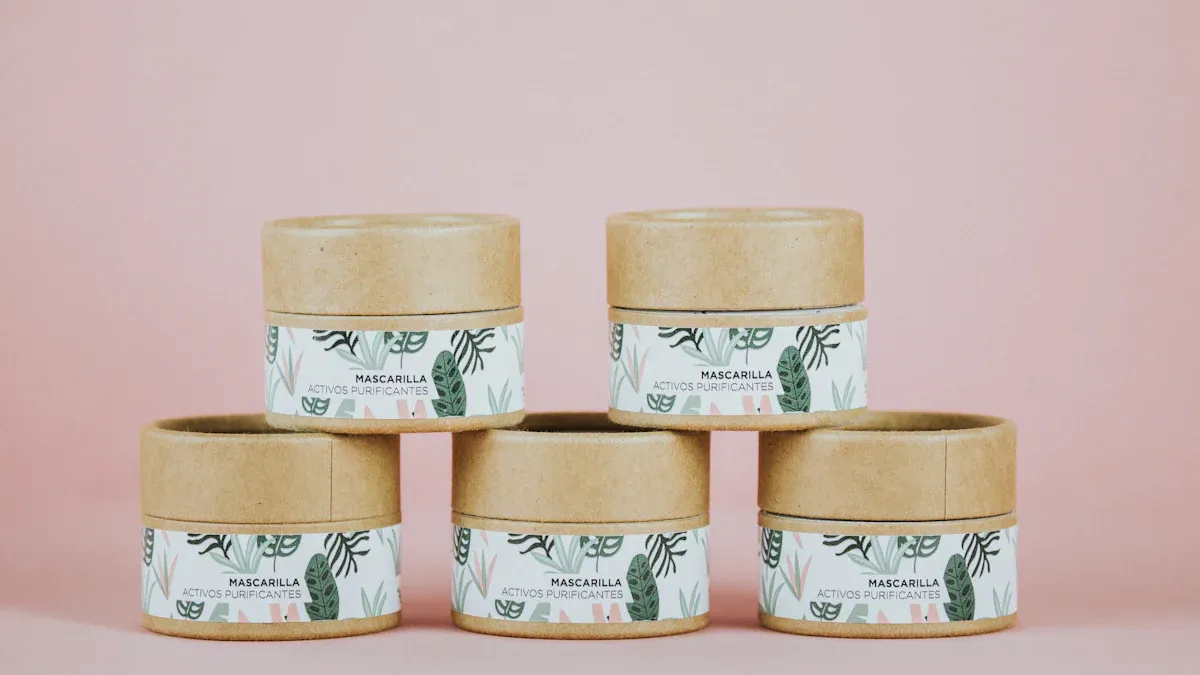
Have you noticed how the beauty industry is shifting toward more sustainable packaging solutions? It’s not just about looking good anymore—it’s about doing good for the planet. With eco-friendly packaging options like bamboo, mushroom packaging, and sugarcane-based plastics, brands are finding smarter ways to reduce waste. This shift isn’t just popular; it’s backed by numbers. Nearly half of shoppers are willing to pay extra for recyclable materials, and products with sustainability claims are growing faster than others. These biodegradable packaging innovations aren’t just trendy; they’re transforming how beauty brands think about their impact.
Bamboo-Based Biodegradable Packaging
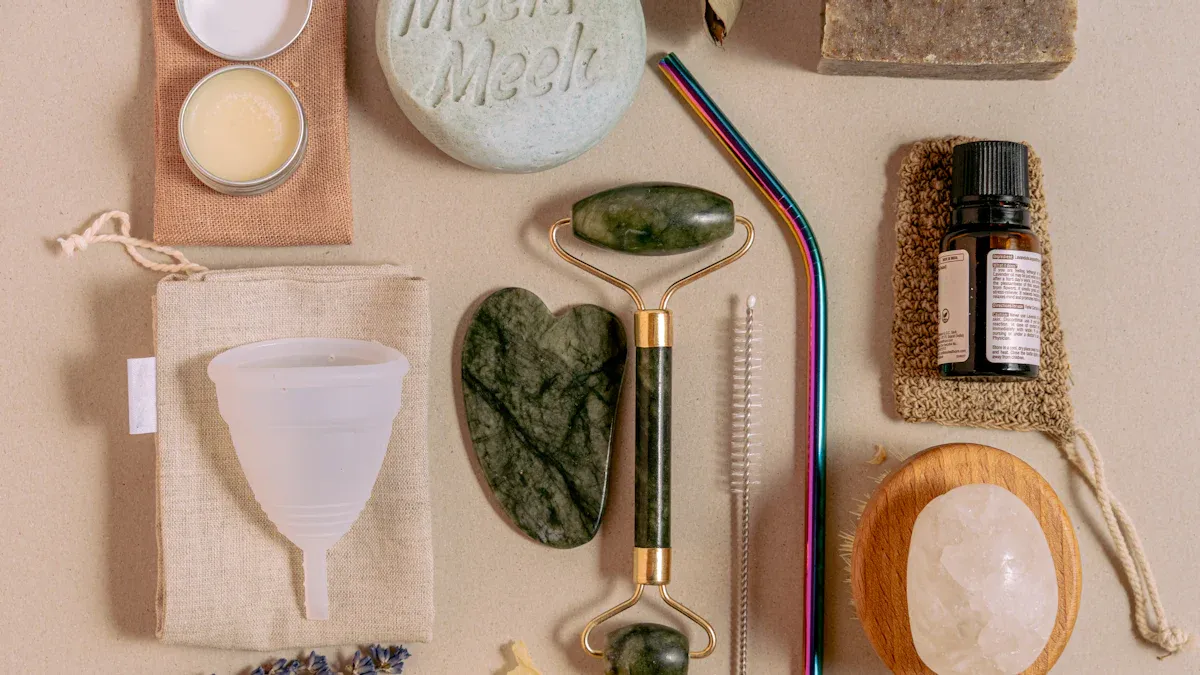
Properties and Benefits of Bamboo
Bamboo is one of nature’s most versatile materials, and it’s making waves in eco-friendly beauty product packaging. क्यों? Because it’s strong, durable, and surprisingly lightweight. Did you know bamboo has a tensile strength higher than steel? That means it can handle wear and tear while keeping your beauty products safe.
Another standout feature is its compostability. Unlike plastic, bamboo biodegrades quickly and doesn’t need special facilities to break down. This makes it a fantastic choice for brands looking to reduce their environmental footprint. प्लस, bamboo grows incredibly fast—some species can grow up to three feet in a single day! This rapid growth makes it a renewable resource that’s perfect for sustainable packaging.
Here’s more: bamboo production is water-efficient. It retains most of the water it uses, making it an eco-friendly option compared to other materials. With advancements in bamboo processing, manufacturers are also improving its moisture resistance and durability, making it even more appealing for beauty packaging innovations.
How Bamboo Packaging Supports Sustainable Packaging
Switching to bamboo packaging isn’t just good for the planet—it’s also great for your brand. ऊपर 70% of sustainable beauty brands are already adopting bamboo packaging. क्यों? Because it aligns with consumer demand for eco-friendly solutions. People want products that are authentic and environmentally responsible, and bamboo delivers on both fronts.
Bamboo packaging also helps beauty brands meet sustainability goals. उदाहरण के लिए, a single bamboo plant can store around two tons of carbon annually, making it a powerful tool for reducing greenhouse gases. And since bamboo is compostable, it doesn’t contribute to the growing problem of landfill waste.
Regions like Europe and North America are leading the way in adopting bamboo packaging, but Asia-Pacific, especially China, is catching up fast. From jars to tubes, bamboo packaging is versatile enough to suit a wide range of beauty products. By choosing bamboo, you’re not just embracing sustainable packaging—you’re also staying ahead in a competitive market that values eco-friendly beauty product packaging.
Mushroom Packaging for Beauty Products
What is Mushroom Packaging?
Mushroom packaging is one of the most exciting biodegradable solutions in the world of eco-friendly beauty product packaging. It’s made from mycelium, which is the root structure of fungi. This material grows naturally and can be molded into different shapes, making it perfect for beauty brands looking for sustainable options.
What makes mushroom packaging stand out is its environmental benefits. It’s fully compostable, breaking down in just 30–45 days without leaving harmful residues. Unlike traditional plastic, which can take hundreds of years to decompose, mushroom-based packaging offers a cleaner, greener alternative.
Here’s another cool fact: mushroom packaging is created using agricultural waste. Instead of throwing away materials like corn husks or wheat stalks, they’re transformed into valuable packaging. This process is energy-efficient and produces very little waste, making it a win-win for the planet.
Take a look at how mushroom packaging compares to other materials:
Material Type | Decomposition Time | Standards Met |
|---|---|---|
Mushroom Packaging | 30–45 days | |
Paper/Cardboard | 2–12 months | Varies, often compliant |
Bagasse | 1–3 months | Often compliant in industrial setups |
PLA | 90% में 180 दिन | ASTM D6400, EN 13432 |
Cornstarch-based Foam | Home compostable | ASTM D6400 |
Algae-based Options | Weeks | Emerging standards |
Applications in Eco-Friendly Beauty Product Packaging
You might be wondering how mushroom packaging fits into the beauty industry. Well, it’s incredibly versatile. Brands are using it for everything from compact cases to protective inserts for fragile products. Its ability to be molded into custom shapes makes it ideal for creating unique packaging designs that stand out on shelves.
Mushroom packaging innovations are also helping reduce plastic use in beauty products. By switching to this biodegradable material, brands can cut down on pollution and align with consumer demand for eco-friendly solutions. प्लस, its compostable nature means customers can dispose of it guilt-free, knowing it won’t harm the environment.
Another advantage is its sustainable cultivation. Mushrooms grow quickly and require minimal resources, so production doesn’t lead to deforestation or excessive land use. This makes mushroom packaging a smart choice for beauty brands looking to embrace sustainable practices.
If you’re a beauty brand searching for eco-friendly packaging innovations, mushroom-based packaging could be your next big move. It’s not just good for the planet—it’s also a great way to show your customers that you care about sustainability.
Sugarcane-Based Plastics in Sustainable Packaging
Overview of Sugarcane Bioplastics
Sugarcane-based plastics are changing the way you think about packaging. These plant-based materials are made from sugarcane ethanol, a renewable resource that’s both eco-friendly and versatile. Unlike traditional plastics, which rely on fossil fuels, sugarcane bioplastics come from a sustainable source that grows quickly and absorbs carbon dioxide during its lifecycle.
What makes sugarcane-based plastics so special? They look and feel just like conventional plastics but offer a biodegradable alternative. You can use them for beauty product packaging without worrying about contributing to landfill waste. प्लस, they’re lightweight and durable, making them perfect for everything from bottles to jars.
Sugarcane bioplastics also align with the growing demand for plant-based packaging innovations. As more beauty brands embrace sustainable practices, sugarcane-based plastics are becoming a go-to option for eco-conscious packaging solutions.
बख्शीश: When you choose sugarcane-based plastics, you’re not just reducing your environmental impact—you’re also showing your customers that you care about sustainability.
Advantages Over Conventional Plastics
Why should you switch to sugarcane-based plastics? For starters, they’re biodegradable plastics, which means they break down naturally over time. Unlike conventional plastics that can take centuries to decompose, sugarcane-based options offer a cleaner, greener solution.
Another big advantage is their carbon footprint. Sugarcane absorbs CO2 as it grows, making these plant-based plastics a carbon-neutral choice. This helps beauty brands reduce their greenhouse gas emissions and meet sustainability goals.
Sugarcane-based plastics are also incredibly versatile. You can mold them into various shapes and sizes, making them ideal for beauty product packaging. Whether you need sleek bottles or compact cases, sugarcane-based materials can deliver.
अंत में, these biodegradable plastics are cost-effective. As production methods improve, sugarcane-based plastics are becoming more affordable, making them accessible to brands of all sizes.
If you’re looking for sustainable packaging innovations, sugarcane-based plastics offer the perfect blend of functionality and eco-friendliness. They’re not just good for the planet—they’re great for your beauty brand too.
Cornstarch Packaging as a Biodegradable Solution
How Cornstarch is Used in Packaging
Cornstarch is becoming a go-to material for eco-friendly packaging in the beauty industry. It’s derived from the starch found in corn kernels, which is processed into a biodegradable polymer. This polymer can be molded into various shapes, making it ideal for packaging beauty products like creams, पाउडर, और सीरम.
You’ll find cornstarch packaging used in items like jars, compact cases, and even protective wraps. It’s safe for direct contact with cosmetics, which makes it a reliable choice for beauty brands. प्लस, it’s compostable, मतलब यह पर्यावरण को नुकसान पहुंचाए बिना स्वाभाविक रूप से टूट जाता है.
Here’s why cornstarch packaging is gaining popularity:
It’s biodegradable and compostable, offering a sustainable alternative to plastic.
It meets the growing consumer demand for environmentally responsible packaging.
It’s versatile and can be customized for different beauty products.
Research shows that cornstarch-based bioplastics are not only eco-friendly but also durable. They can achieve tensile strengths ranging from 4.48 को 8.14 MPa, making them suitable for flexible packaging applications. This combination of strength and sustainability makes cornstarch packaging a smart choice for beauty brands.
Environmental Benefits of Cornstarch Materials
Cornstarch packaging offers several environmental benefits that make it stand out in the world of sustainable beauty. First, it’s biodegradable. Unlike traditional plastics that take centuries to decompose, cornstarch packaging breaks down in a matter of months. This helps reduce plastic waste and keeps landfills cleaner.
Second, it’s made from renewable resources. Corn is a crop that grows quickly and is widely available, making it a cost-effective and sustainable material. Using cornstarch for packaging reduces reliance on fossil fuels and supports a greener production process.
Third, cornstarch packaging helps combat pollution. Since it’s compostable, it doesn’t release harmful chemicals into the soil or water during decomposition. This makes it a safer option for the planet and aligns with the beauty industry’s push for sustainable practices.
Biodegradable packaging, including cornstarch, is becoming a popular solution to tackle plastic waste in cosmetics. By choosing cornstarch materials, you’re not just reducing your environmental footprint—you’re also showing your customers that sustainability matters to your brand.
Seaweed-Based Packaging Innovations
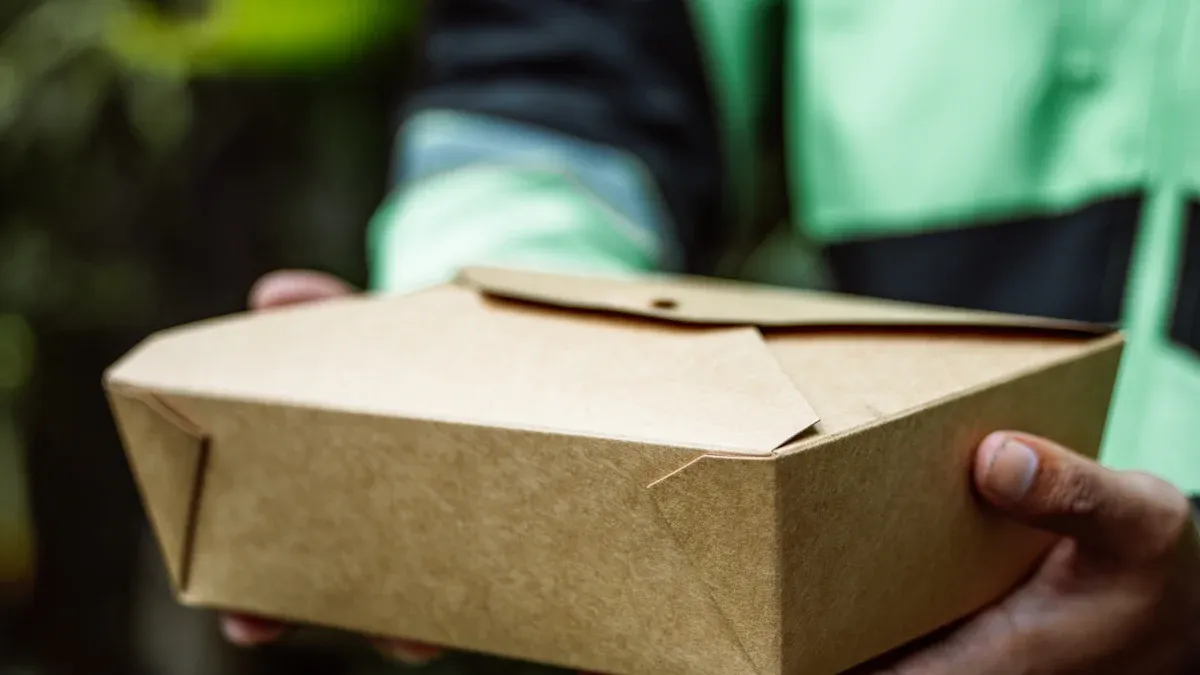
Unique Properties of Seaweed Packaging
Seaweed-based packaging is making waves in the sustainable beauty industry. This innovative material comes from seaweed, a renewable resource that grows abundantly in oceans without the need for fresh water or fertilizers. Its natural properties make it an excellent alternative to traditional plastics.
One of the most impressive features of seaweed-based packaging is its biodegradability. Unlike conventional plastics, which can take centuries to break down, seaweed decomposes naturally in a matter of weeks. This means less waste piling up in landfills and a cleaner environment for everyone.
Seaweed packaging also stands out for its versatility. यह replace hard-to-recycle plastics like polyethylene and polypropylene. You’ll find it used in single-use films, invisible barrier coatings, and even adhesives. These applications make it a game-changer for beauty brands looking to adopt sustainable practices.
Another unique aspect is its ability to absorb carbon dioxide during production. A single hectare of ocean can produce 40 tons of dry seaweed while absorbing over 20 tons of CO2. This makes seaweed packaging not just eco-friendly but also a powerful tool in combating climate change.
Potential for Reducing Ocean Pollution
You’ve probably heard about the growing problem of plastic pollution in our oceans. Seaweed-based packaging offers a sustainable solution to this crisis. By replacing traditional plastics with biodegradable seaweed materials, you can help reduce the amount of waste that ends up in the ocean.
Seaweed packaging doesn’t just decompose quickly—it also avoids releasing harmful chemicals into the water. This helps protect marine life and keeps ecosystems healthier. प्लस, its production process generates fewer greenhouse gas emissions compared to conventional plastics, making it a cleaner choice overall.
Switching to seaweed-based packaging can also inspire others to follow suit. When beauty brands adopt sustainable materials, they set an example for the industry and encourage more companies to prioritize eco-friendly solutions. एक साथ, these efforts can make a significant impact on reducing ocean pollution and preserving our planet for future generations.
Paper and Cardboard in Sustainable Packaging Solutions
Advances in Recycled Paper Packaging
Recycled paper packaging has come a long way, thanks to some impressive advancements in technology. Modern recycling facilities now use artificial intelligence to sort and process paper more efficiently. This means fewer contaminants and higher-quality recycled materials. उदाहरण के लिए, AI-powered shredders and sensor-based sorting systems are making it easier to reuse paper fibers. In Germany, high-speed optical sensors are improving sorting accuracy, while countries like Japan and Sweden are using robotic systems to reduce costs and boost precision.
These innovations are helping manufacturers produce better recycled paper packaging at a lower cost. नतीजतन, more brands are turning to recycled paper as a sustainable option for their products. With these advancements, you can feel confident that recycled paper packaging is not only eco-friendly but also reliable and cost-effective.
Why Paper is a Popular Choice for Beauty Brands
Paper and cardboard have become go-to materials for beauty brands aiming to adopt sustainable practices. क्यों? First, they’re biodegradable, which means they break down naturally without harming the environment. Unlike plastic, which can linger for centuries, paper decomposes in just a few months.
Another reason paper is so popular is its versatility. You can use it for everything from product boxes to labels and even protective inserts. प्लस, recycled paper packaging often has a premium, natural look that appeals to eco-conscious consumers. It’s a win-win—you get sustainable packaging, and your products stand out on the shelf.
Paper also aligns perfectly with the growing demand for sustainable beauty solutions. Consumers want brands that care about the planet, and choosing paper shows that you’re committed to reducing waste. Whether you’re a small indie brand or a global beauty powerhouse, paper packaging can help you meet your sustainability goals while keeping your customers happy.
Coconut-Based Biodegradable Packaging
How Coconut Waste is Repurposed
Coconut waste is turning into a surprising hero in the world of sustainable packaging. Instead of tossing coconut husks and fibers into landfills, manufacturers are repurposing them into eco-friendly materials. These fibers are strong, लाइटवेट, and naturally antimicrobial, making them perfect for beauty product packaging.
A study highlights how coconut husk materials reduce CO2 gas permeability by 81% and oxygen transmittance rates by 79%. These properties help preserve products while showcasing the antimicrobial benefits of coconut-based packaging. The same research also explores how coconut fibers can be processed into bioplastics and eco-friendly paper, offering a greener alternative to traditional packaging solutions.
What’s even better? Coconut waste is abundant and renewable. By using these materials, you’re not just reducing waste—you’re giving new life to something that would otherwise be discarded. This approach supports a circular economy, where resources are reused instead of wasted.
Benefits for Sustainable Beauty Products
Coconut-based packaging offers several benefits for beauty brands aiming to go green. First, it’s biodegradable. Unlike plastic, which can take centuries to break down, coconut-based materials decompose naturally, पीछे कोई हानिकारक अवशेषों को छोड़कर. This makes them a fantastic choice for brands committed to sustainable practices.
Second, coconut packaging is durable yet lightweight. It protects your beauty products while keeping shipping costs low. प्लस, its natural antimicrobial properties help extend the shelf life of cosmetics, ensuring your products stay fresh longer.
Another big win? Coconut packaging aligns perfectly with consumer demand for eco-friendly solutions. Shoppers are increasingly looking for sustainable options, and using coconut-based materials shows your brand cares about the planet. It’s a smart way to stand out in a competitive market while reducing your environmental footprint.
If you’re searching for innovative packaging ideas, coconut-based solutions could be the perfect fit. They’re not just good for the planet—they’re great for your beauty brand too.
Hemp Packaging for Eco-Friendly Beauty Products
Properties of Hemp as a Packaging Material
Hemp is quickly becoming a favorite in sustainable packaging. क्यों? It’s packed with eco-friendly properties that make it a standout choice for beauty brands. Hemp-based materials are sustainable, बाइओडिग्रेड्डबल, and align perfectly with the values of eco-conscious consumers.
Here’s a quick look at what makes hemp so special:
Property | विवरण |
|---|---|
वहनीयता | Hemp-based materials are recognized for their sustainable nature. |
Biodegradability | These materials are biodegradable, reducing environmental impact. |
Consumer Preference | Aligns with eco-conscious values of consumers, enhancing market appeal. |
Hemp grows fast and requires fewer resources like water and pesticides compared to other crops. This makes it a renewable option for creating eco-friendly packaging. प्लस, it’s incredibly durable, so it protects your beauty products while staying kind to the planet.
Why Hemp is Gaining Popularity in Beauty
Hemp isn’t just a trend—it’s a game-changer for the beauty industry. More brands are turning to hemp packaging because it checks all the right boxes. It’s sustainable, बाइओडिग्रेड्डबल, and appeals to customers who care about the environment.
Consumers today want more than just great products. They want to know their purchases are making a positive impact. Hemp packaging helps brands meet this demand. It shows that you’re committed to reducing waste and protecting the planet.
Another reason hemp is gaining traction? It’s versatile. You can use it for jars, बक्से, or even protective wraps. Its natural look also adds a premium, earthy vibe to your products, which resonates with eco-conscious shoppers.
By choosing hemp, you’re not just keeping up with the latest trends—you’re setting your brand apart in a competitive market. It’s a smart move for any beauty company looking to embrace sustainable practices and connect with environmentally aware customers.
Biodegradable Films and Wraps in Beauty Packaging
What are Biodegradable Films?
Biodegradable films are thin, flexible materials designed to break down naturally over time. Unlike traditional plastic wraps, these films decompose into harmless substances, leaving no long-term waste behind. They’re made from renewable resources like plant starches, polylactic acid (PLA), or even algae, making them a sustainable choice for beauty brands.
What sets biodegradable films apart is their eco-friendly production process. They require less petroleum and energy to manufacture, which helps reduce carbon emissions. प्लस, they’re recyclable and compostable, offering a cleaner alternative to conventional plastic wraps.
Here’s a quick look at how these films perform:
Performance Measure | विवरण |
|---|---|
Reduction in Carbon Emission | Significant reduction in carbon emissions during manufacturing and composting processes. |
Lesser Energy Consumption | Requires less energy in the long run despite higher initial investment. |
Eco-Friendly Disposable Solution | Needs composting or recycling for proper breakdown, promoting natural composting processes. |
Recyclable Material | Breaks down faster than regular plastic and can be recycled into new plastic products. |
Lower Petroleum Consumption | Uses natural products, reducing reliance on petroleum and its environmental impacts. |
Application in Beauty Packaging | Biodegradability is a feasible solution for managing post-consumer waste in the beauty industry. |
These features make biodegradable films a smart option for brands looking to reduce their environmental footprint while maintaining high-quality packaging.
Applications in Beauty Product Packaging
You’ve probably seen biodegradable films used in everyday items like food wraps, but they’re also making waves in the beauty industry. These films are perfect for wrapping products like soaps, स्नान बम, and sheet masks. They’re lightweight, durable, and provide excellent protection against moisture and contaminants.
Beauty brands are also using biodegradable films for secondary packaging, like shrink wraps around product boxes. This not only keeps items secure but also adds a layer of eco-friendliness to the overall presentation.
Another exciting application is in refillable beauty products. Some brands are using these films to create dissolvable pods for shampoos or serums. Once you add water, the film dissolves completely, leaving no waste behind. It’s a clever way to combine convenience with sustainability.
By incorporating biodegradable films into your packaging strategy, you’re not just reducing waste—you’re also showing your customers that you care about the planet. It’s a small change that can make a big difference in how your brand is perceived.
Compostable Packaging Innovations in the Beauty Industry
What Makes Packaging Compostable?
Compostable packaging is a game-changer for beauty brands looking to reduce waste. But what makes packaging compostable? It’s all about the materials. Compostable packaging is made from natural substances like plant fibers, starches, or biodegradable polymers. These materials break down into organic matter when exposed to the right conditions, such as heat, नमी, and microorganisms.
Unlike recyclable packaging, compostable options don’t need industrial facilities to process them. You can toss them into your home compost bin, and they’ll decompose within weeks or months. This makes compostable packaging a convenient and eco-friendly choice for consumers.
Here’s a quick tip: Look for certifications like ASTM D6400 or EN 13432. These standards ensure the packaging meets compostability requirements and won’t leave harmful residues behind.
Compostable packaging doesn’t just reduce waste—it also enriches the soil by turning into nutrient-rich compost. That’s a win-win for the planet and your brand’s sustainability goals.
Examples of Compostable Beauty Packaging
Beauty brands are getting creative with compostable packaging. You’ll find everything from compostable jars to biodegradable wraps for soaps and bath bombs. Some brands even use compostable pouches for powders and creams. These options not only protect the products but also align with eco-conscious values.
One standout example is compostable sheet mask packaging. Instead of using plastic, brands are switching to plant-based films that break down naturally. Another innovation is compostable refill pods for shampoos and serums. These pods dissolve in water, leaving no waste behind.
Here’s a list of popular compostable packaging materials used in beauty:
Plant-based films: Perfect for wraps and sachets.
Bagasse: Made from sugarcane pulp, ideal for jars and containers.
Cornstarch polymers: Great for lightweight packaging like compact cases.
By adopting compostable packaging, you’re not just reducing your environmental footprint—you’re showing your customers that sustainability matters to your brand.
The Role of Refillable and Dissolvable Packaging
How Refillable Packaging Reduces Waste
Refillable packaging is changing the way you think about beauty products. Instead of tossing out empty containers, you can refill them, cutting down on waste and helping the planet. This simple switch is making a big difference in the beauty industry.
Why is refillable packaging so effective? For starters, it reduces the amount of plastic used. Brands like L’Occitane have introduced eco-refill pouches that use 85% less plastic than traditional bottles. That’s saving around 200 tonnes of plastic every year! Refillable options also mean less waste overall, as fewer containers end up in landfills.
Here’s how refillable packaging is reshaping the beauty world:
More consumers are choosing eco-friendly products, prioritizing sustainability in their purchases.
Refill stations and refillable containers are becoming popular, lowering waste and carbon footprints.
Leading brands are adopting refillable solutions, boosting loyalty among environmentally conscious shoppers.
The environmental impact is clear. Refillable systems reduce total waste, cut down on plastic use, and even lower shipping weight, which means less fuel is needed for transport. Take a look at the measurable benefits:
Key Feature | Impact Description |
|---|---|
Less overall waste generated | |
Reduction in plastic used | Decreased plastic consumption |
Reduction in shipping weight | Lighter packaging reduces transport impact |
Improved recyclability | Easier to recycle materials used |
Switching to refillable packaging isn’t just good for the environment—it’s also a smart move for beauty brands. It shows your customers that you care about sustainability, which can set you apart in a competitive market.
Dissolvable Packaging as a Sustainable Alternative
Dissolvable packaging is another exciting innovation in sustainable beauty. Imagine a product where the packaging disappears after use—no waste, no guilt. That’s exactly what dissolvable packaging offers.
This type of packaging is made from materials like plant-based films or water-soluble polymers. When exposed to water, it breaks down completely, leaving no harmful residue behind. It’s perfect for single-use beauty products like sheet masks, स्नान बम, or shampoo pods.
Here’s why dissolvable packaging is a game-changer:
It eliminates waste entirely, reducing the environmental impact of beauty products.
यह हल्का है, which lowers shipping costs and carbon emissions.
It’s convenient for consumers, offering a mess-free and eco-friendly experience.
Some brands are already using dissolvable pods for products like serums and shampoos. You just add water, and the pod dissolves, leaving only the product behind. This innovative approach combines sustainability with convenience, making it a win-win for you and the planet.
By embracing dissolvable packaging, beauty brands can take a bold step toward reducing waste and meeting the growing demand for eco-friendly solutions. It’s a small change that can make a big difference in how customers view your brand.
Oully’s Commitment to Sustainable Packaging
Oully’s Expertise in Customizable Biodegradable Packaging
When it comes to sustainable packaging, Oully stands out as a leader. एक दशक से अधिक अनुभव के साथ, they’ve mastered the art of creating biodegradable solutions tailored to your brand’s needs. Whether you’re looking for eco-friendly jars, bottles, or wraps, Oully offers customizable options that align with your vision.
Their expertise lies in combining functionality with sustainability. Every piece of packaging they design is not only durable but also kind to the planet. You can choose from a variety of materials like bamboo, sugarcane-based plastics, or even cornstarch. These options ensure your beauty products look great while reducing environmental impact.
Oully’s state-of-the-art facility ensures high-quality production. They work closely with you to create packaging that reflects your brand’s identity. प्लस, their fast turnaround times mean you won’t have to wait long to bring your sustainable ideas to life.
How Oully Supports Beauty Brands with Sustainable Solutions
Oully doesn’t just provide packaging—they partner with you to achieve your sustainability goals. They understand the challenges beauty brands face in today’s eco-conscious market. That’s why they offer end-to-end support, from design to manufacturing.
Their team helps you select the best biodegradable materials for your products. Need something unique? Oully specializes in custom designs that make your packaging stand out. They also ensure every solution meets global sustainability standards, giving you peace of mind.
Oully का चयन करके, you’re not just reducing waste—you’re showing your customers that you care about the planet. This commitment to sustainability can boost your brand’s reputation and attract eco-conscious shoppers. With Oully by your side, you can lead the way in sustainable beauty packaging.
Biodegradable packaging is reshaping the beauty industry, offering smarter and greener alternatives to traditional plastics. These innovative materials not only reduce waste but also meet the growing demand for eco-friendly solutions. Consumers are increasingly prioritizing sustainability, साथ 46% willing to pay more for products featuring recyclable packaging और 79% favoring refillable options.
Brands like Oully are leading the charge, providing customizable biodegradable packaging that aligns with your vision for a sustainable future. By adopting these solutions, you can reduce your environmental footprint, attract eco-conscious shoppers, and stay ahead in a competitive market.
The shift toward sustainable packaging isn’t just a trend—it’s a necessity. Embracing these materials helps you contribute to a greener planet while building a brand that resonates with modern values. The beauty industry is evolving, and now is the perfect time to join the movement toward a sustainable future.
उपवास
What are biodegradable packaging materials?
Biodegradable packaging materials break down naturally into harmless substances like water and carbon dioxide. They’re made from renewable resources such as bamboo, sugarcane, or cornstarch. These materials help reduce waste and are perfect for eco-conscious beauty brands.
Why should beauty brands switch to sustainable packaging?
Switching to sustainable packaging shows your commitment to the planet. It reduces waste, attracts eco-conscious customers, and aligns with global efforts to combat pollution. प्लस, it helps your brand stand out in the competitive beauty industry.
How does compostable packaging differ from recyclable packaging?
Compostable packaging decomposes into nutrient-rich compost, enriching the soil. Recyclable packaging, वहीं दूसरी ओर, gets processed into new materials. Both are eco-friendly, but compostable options break down faster and don’t require industrial recycling facilities.
Can biodegradable packaging protect beauty products effectively?
हाँ! Biodegradable packaging is durable and versatile. Materials like bamboo and sugarcane-based plastics provide excellent protection for beauty products while being kind to the environment. They’re designed to meet both functional and sustainable needs.
Are biodegradable materials more expensive than traditional packaging?
Initially, biodegradable materials might cost more. तथापि, as demand grows and production scales up, prices are becoming more competitive. प्लस, the long-term benefits for your brand and the planet outweigh the initial investment.

